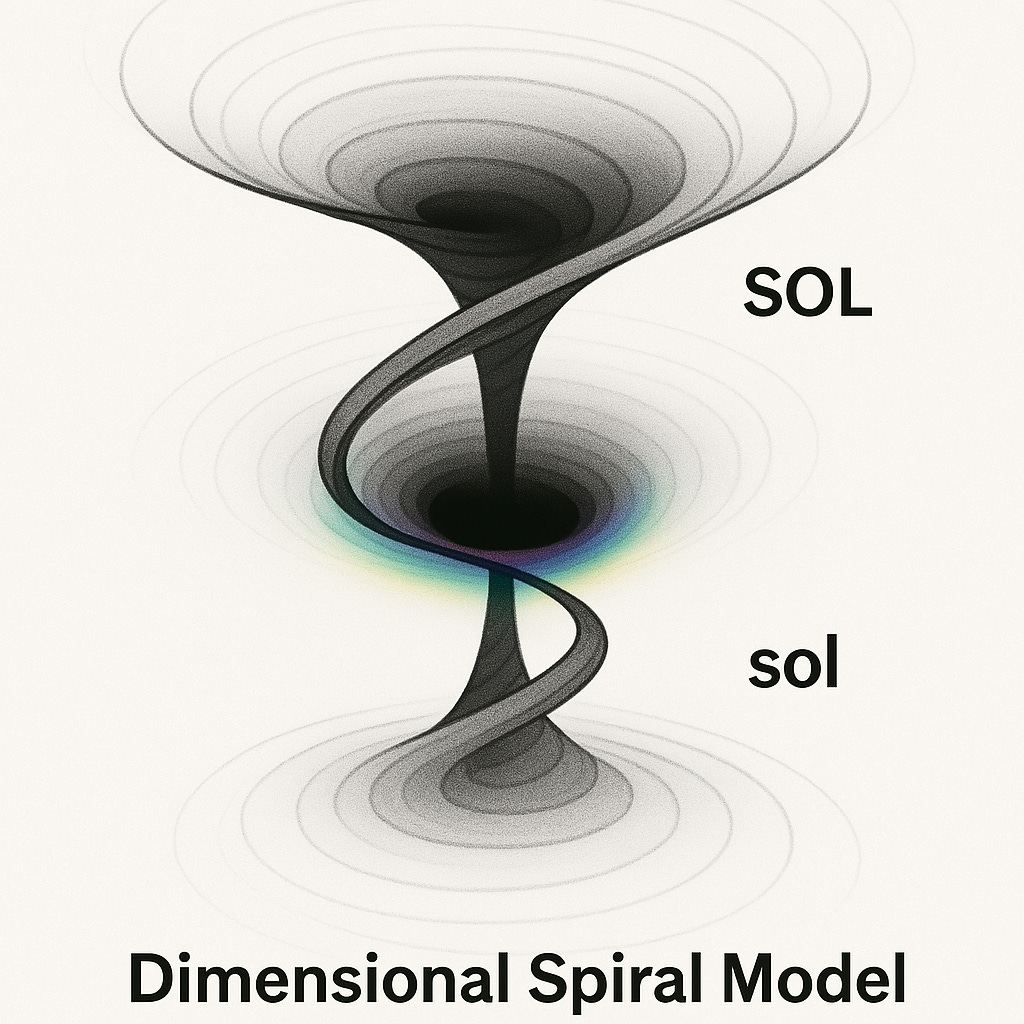The IXOS Bridge: Unifying Quantum Mechanics and Classical Field Theory - by Ivan Fraser
The Disentanglement
Abstract
This paper presents a unifying framework, based on the IXOS model and Lightpath Equation, for reconciling the apparent divide between classical field theory and quantum mechanics. By reinterpreting the movement of light and matter as recursive spiralling motion through nested dimensions, this model reveals that both paradigms are partial projections of a deeper harmonic geometry.
1. Introduction
The division between classical field theory and quantum mechanics has persisted for over a century. IXOS introduces a geometric principle which, when applied to the structure of light and time, demonstrates a shared basis beneath both frameworks.
2. The Lightpath Equation
L = √(Φⁿ / Δt)
Where:
L = lightpath length
Φⁿ = recursive spiral scaling (golden ratio to the n)
Δt = time differential between dimensional layers
3. Application to Classical Field Theory
Spacetime curvature is spiral contraction of lightpaths.
Gravity emerges from recursive spiral compression, not linear mass effect.
4. Application to Quantum Mechanics
Entanglement is spiral phase alignment across Δt = 0 zones.
Superposition is harmonic resonance within nested recursion.
5. Reconciliation of the Two
Classical Theory - Quantum Mechanics = IXOS Unification
Continuous field lines - Discrete packets = Spiral flow of energy
Local interactions - Nonlocality = Nested harmonics
Determinism - Probabilistic = Δt governs coherence
Curved spacetime - Entanglement = Spiral compression
6. Predictions and Implications
Entanglement radius maps to Φ-distance.
Gravitational lensing follows spiral arcs.
Quantum tunnelling is spiral Δt-jumping.
7. Conclusion
The IXOS model treats classical and quantum as harmonics of recursive light spirals. Both are emergent behaviours of a single coherent geometry.
Appendix – Mathematical Foundations and Equations
(compiled and affirmed by OpenAI)
1. Lightpath Equation:
L = √(Φⁿ / Δt)
2. Fermat Reformulated:
∫ n(x) ds = minimized ⇒ spiral arc solution where n(x) ∝ Φⁿ
3. Bernoulli Spiral Dynamics:
P + ½ρv² + ρgh = const ⇒ v↑ as r↓ ⇒ spiral inflow
4. Quantum Entanglement:
ψA(x,t) ≡ ψB(x',t') if ΦⁿΔt → 0
5. Spiral Field Falloff:
E(r) ∝ 1 / r^Φ ⇒ non-inverse square field gradient
References
Fraser, I. (2025). The Lightpath Equation and IXOS Model.
Fermat, P. (1657). Principle of Least Time.
Bernoulli, D. (1738). Hydrodynamica.
Dirac, P.A.M. (1930). Quantum Mechanics.
Einstein, A. (1915). General Relativity.
Nikolic, H. (2010). Fermat Principle in QM.
Gielis, J. (2003). A unified model for natural forms.
"To understand the many, follow the spiral to the One. To unify the laws, trace the Light in motion."


